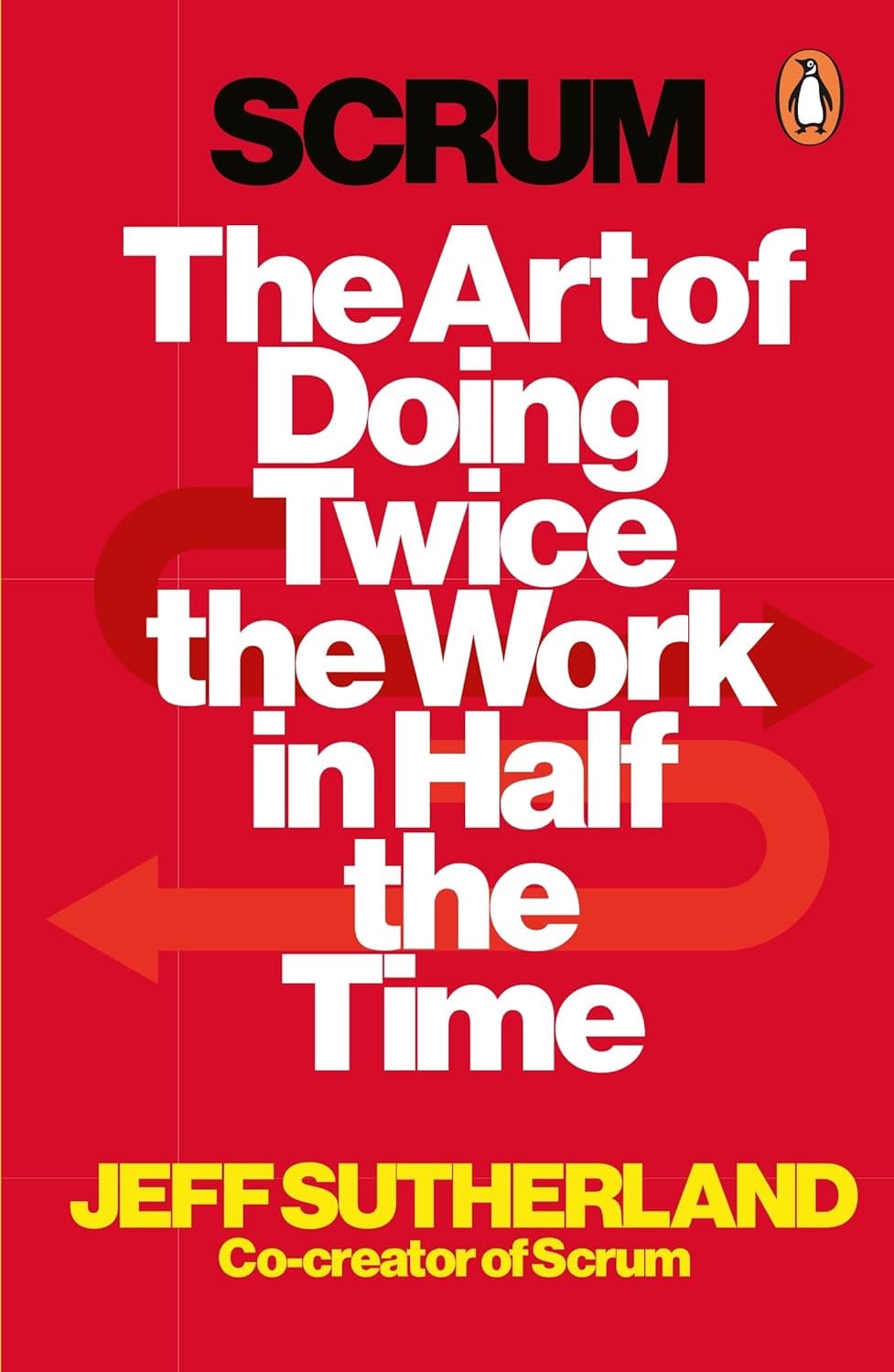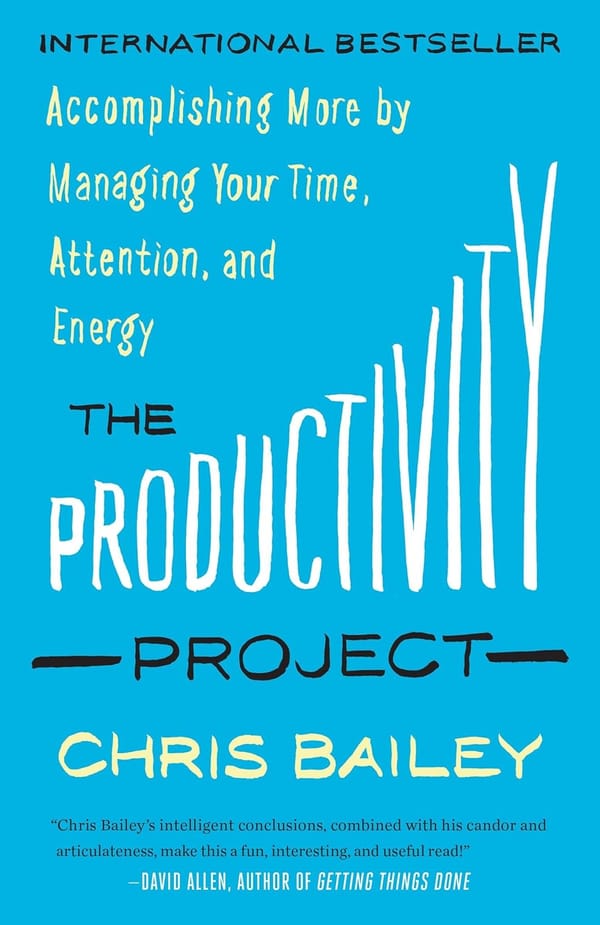Scrum - Book Notes
Revolutionize Your Projects: Unleash Scrum's Winning Strategies! Explore the transformative power of Jeff Sutherland's 'Scrum' framework to revolutionize your project management approach. Learn how to foster collaboration, adaptability, and continuous improvement to drive value, innovation, and success in your team's endeavors.
If you enjoyed my review, consider supporting me by using the affiliate links below to purchase the book. Your kindness fuels my passion for sharing captivating reads with you!
🚀 The Book in 3 Sentences
- "Scrum" by Jeff Sutherland introduces a project management framework inspired by rugby team dynamics, emphasizing regular check-ins, adaptability, and continuous improvement.
- It advocates for setting clear, time-bound goals and empowering self-organizing teams to decide how to achieve them, promoting autonomy and accountability.
- Through iterative cycles of work, collaborative decision-making, and a focus on delivering customer value, Scrum enables organizations to foster a culture of continuous improvement and achieve greater efficiency and innovation in their projects.
👱 Who Should Read it?
"Scrum" by Jeff Sutherland is highly recommended for individuals and teams involved in project management, software development, or any collaborative work environment seeking to improve productivity, enhance team dynamics, and deliver value to customers more efficiently. It's also valuable for managers and leaders interested in adopting agile methodologies to drive organizational agility, innovation, and adaptability.
🍀 How the Book Changed Me
It gave me valuable insights about agile project management and sparked interest to learn more about it. It inspired me to apply some of its core principles into the projects I do at work and to find projects that are a good match for agile methodologies.
✍️ Top 3 Quotes
- "Scrum is designed to change the system rather than seeking someone to blame."
- "One of the key concepts in Scrum is that the team members decide themselves how they’re going to do the work."
- "The team decides how the work will be accomplished, but what will be accomplished is decided by business value."
🔨 3 Action Points
- Implement Regular Sprint Retrospectives:
Schedule regular retrospectives at the end of each sprint to reflect on what went well, what didn't, and what can be improved. Encourage open dialogue among team members to identify actionable items for enhancing processes and team dynamics. - Prioritize Value-driven Work:
Embrace a value-driven approach to task prioritization. Prioritize tasks based on their potential impact on customers and stakeholders, focusing on delivering the most valuable features first. Continuously reassess priorities to ensure alignment with project goals and maximize value delivery. - Foster a Culture of Continuous Improvement:
Cultivate a culture of continuous improvement within the team. Encourage experimentation, learning, and adaptation through practices like the PDCA cycle and embracing the Kaizen philosophy. Empower team members to take ownership of their work and contribute to refining processes for greater efficiency and effectiveness.
📗 Summary & Notes
Introduction: Understanding the Fundamentals of Scrum
In Jeff Sutherland's book "Scrum," he introduces a powerful framework for managing complex projects effectively. Scrum is not just a set of rules or processes; it's a mindset that emphasizes collaboration, adaptability, and continuous improvement. Let's delve deeper into some key concepts explored in the book
The Essence of Scrum: Embracing an Iterative Approach
Scrum emphasizes iterative project management. Unlike traditional linear methods, where all requirements are gathered upfront and followed through to completion in a predetermined sequence, Scrum breaks work into smaller, manageable chunks called Sprints. These Sprints typically last from one to four weeks and allow teams to focus on delivering a set of features or functionalities. The iterative nature of Scrum enables teams to respond quickly to change, gather feedback early and often, and deliver value incrementally.
Sprints: Harnessing the Power of Time-Boxed Iterations
Sprints are the heartbeat of Scrum. During each Sprint, the team works to achieve a specific goal, whether it's completing a set of user stories, fixing bugs, or implementing new features. By time-boxing their work into Sprints, teams create a cadence that helps them maintain a steady pace of progress and enables stakeholders to anticipate when they can expect new features or updates. Additionally, the time-boxed nature of Sprints encourages teams to focus on what's achievable within a given timeframe, promoting a sense of urgency and commitment.
Empowering Teams: The Role of Self-Organization and Cross-Functionality
Scrum teams are self-organizing and cross-functional, meaning they have the autonomy to decide how to accomplish their goals and possess all the skills necessary to deliver a complete product increment. This autonomy empowers teams to make decisions quickly, adapt to changing circumstances, and take ownership of their work. Cross-functional teams, composed of individuals with diverse skills and expertise, are better equipped to tackle complex problems and overcome obstacles without being dependent on external resources or specialized roles.
Continuous Improvement: Embracing the Kaizen Philosophy
Scrum embraces the Kaizen philosophy of continuous improvement, which encourages teams to regularly reflect on their processes, identify areas for improvement, and implement changes to enhance their performance. Practices like the Sprint Retrospective provide teams with a dedicated time to review what went well, what didn't go so well, and what actions they can take to improve in the next Sprint. By fostering a culture of learning and adaptation, Scrum enables teams to evolve and improve over time, ensuring they deliver better results with each iteration.
Reducing Waste: Focusing on Efficiency and Effectiveness
Scrum emphasizes the importance of reducing waste in all its forms, whether it's unnecessary tasks, inefficient processes, or unproductive meetings. Teams are encouraged to streamline their workflows, eliminate bottlenecks, and optimize their use of time and resources. By focusing on what truly adds value to the project and eliminating anything that doesn't, teams can operate more efficiently and effectively, delivering better results in less time and with fewer resources.
Maximizing Value: Prioritization and the Minimum Viable Product (MVP)
In Scrum, delivering value is paramount. Teams prioritize their work based on its potential impact on customers and stakeholders, focusing on delivering the most valuable features first. The concept of the Minimum Viable Product (MVP) is central to this approach, encouraging teams to deliver the smallest set of features that still provide value to customers. By delivering value early and often, teams can gather feedback, iterate on their product, and ensure that they're always delivering what matters most to their users.
Cultivating Happiness: Creating a Motivated and Engaged Team
Finally, Scrum places a strong emphasis on creating a happy, motivated, and engaged team environment. By providing team members with autonomy in their work, opportunities for skill development and mastery, and a sense of purpose in what they're doing, Scrum empowers individuals to do their best work and contribute to the team's success. A motivated and engaged team is more likely to collaborate effectively, overcome challenges, and deliver high-quality results, making happiness a critical component of Scrum's success.
Conclusion: Embracing the Scrum Mindset for Success
In summary, "Scrum" by Jeff Sutherland offers not just a framework for project management, but a mindset shift towards collaboration, adaptability, and continuous improvement. By embracing the principles of Scrum and putting them into practice, teams can navigate complex challenges with agility, creativity, and a relentless focus on delivering value to their customers and stakeholders. Scrum isn't just about following a set of rules; it's about embracing a new way of working that empowers teams to achieve their full potential and deliver exceptional results.
Bonus: Implement SCRUM
- Select a Team: Form a small team of 3 to 9 members with diverse skills necessary to bring the vision to reality.
- Appoint a Scrum Master: This person coaches the team on Scrum principles and helps remove obstacles.
- Choose a Product Owner: This individual holds the vision for the project, considering risks, rewards, and feasibility.
- Develop and Prioritize the Product Backlog: Create a list of all tasks needed to fulfill the vision, prioritized by the Product Owner in consultation with stakeholders.
- Refine and Estimate the Product Backlog: The team estimates the effort required for each task using relative sizing techniques like Fibonacci sequence.
- Conduct Sprint Planning: Determine what tasks can be completed in a fixed-length Sprint, usually one or two weeks. Set a Sprint Goal during this meeting, committing to what the team can accomplish.
- Make Work Visible: Use a Scrum Board or Burndown Chart to track progress and ensure transparency.
- Hold Daily Stand-up Meetings: Teams meet daily for 15 minutes to discuss what they did, what they plan to do, and any obstacles they face.
- Conduct Sprint Review: Showcase completed work to stakeholders, ensuring it meets the Definition of Done.
- Facilitate Sprint Retrospective: Reflect on the previous Sprint, identify what went well, what could be improved, and decide on one process improvement to implement in the next Sprint.
- Start the Next Sprint: Immediately begin the next Sprint cycle, incorporating lessons learned and process improvements.
By following these steps, teams can effectively implement Scrum and continuously improve their processes and outcomes.



